Visitors can immerse themselves in a long bygone era at the Dennis Severs House in London. A truly great experience.
18 Folgate Street. We are in the heart of Spitalfields in London. The Huguenots arrived here in the late 17th century and settled as weavers. To this day the names of adjoining streets bear witness to their former French inhabitants: such as Fleur de Lis Street or Corbet Place. And the Georgian townhouses still reveal their history, too, as the windows of the upper storys are comparatively large. It was there, in the attics, that the weaving looms were placed, in order to make the best possible use of the daylight.
18 Folgate Street distinguishes itself from the neighboring houses even from the outside. The details make all the difference: a wooden door painted black, the window frames are also painted in black, not white, and the shutters are red. A large lantern with a candle burning inside hangs above the door, something that really stands out around here. It is Wednesday evening, I notified the inhabitants that I would be coming around 7.30 p.m. I don’t even need to knock, as the door opens by itself and I’m greeted by Joe. “No photography, don’t touch anything and most importantly: don’t speak! It’s a silent night.” I enter and the door closes behind me. And I am in the 18th century.
A door closes somewhere
The sun is already setting outside and the shutters are closed, which makes it fairly dark inside. The rooms are lit by candles only. Of course: it’s the 18th century, after all. I find myself in the house of the silk weaver family Jervis, and throughout the evening I keep hearing them but never actually see them. I hear a breath here or there, a door closes somewhere in the house, someone clears their throat in the room next door. Every time I walk into a room the family members have just left.
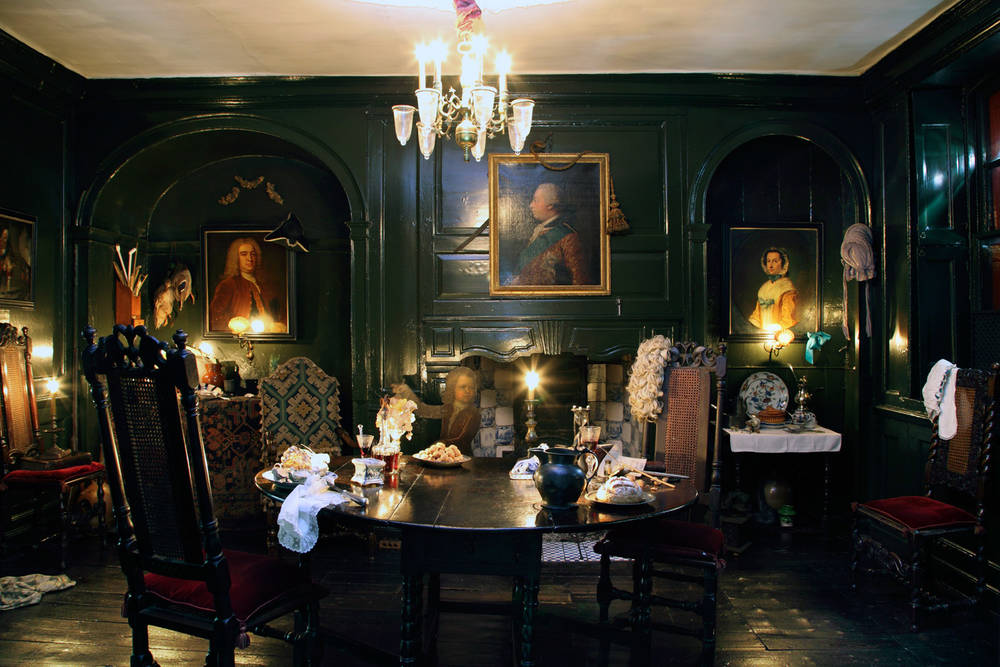
In the reception room the tea cups are still half full, a pair of glasses lies on a newspaper. It looks as though someone has just opened a letter or begun to write one. Two portraits, of the man and woman of the house, adorn the reception room walls. The wig hanging over the back of a chair: it’s the same one as in the painting! Before looking around the upper floors – of course I am curious, and feel simultaneously like a kid in a candy store and and a bull in a china shop: Who actually allowed me to poke around here? – a look at the kitchen, which is in the cellar.
The wooden floor creaks
Here, too it looks as though someone has just put their work down: In this case, writing a recipe – the quill and inkwell still placed next to an open notebook. Eggs and apples are on the table ready to be cut. A fire burns in the open oven and kitchen smells waft through the air. I wander up to the top floors and the dark wooden floor creaks under my step. The sounds of birds tweeting, children playing and horseshoes on cobblestones drifts in from outside. Church bells ring in the distance.
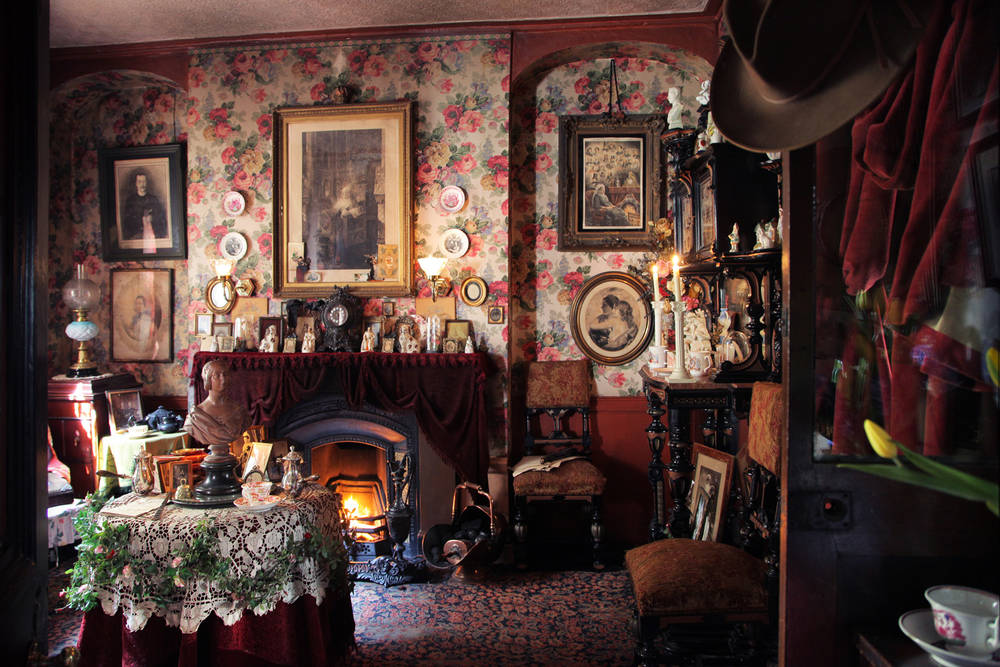
The lady of the house’s tea room is furnished with fine silk fabrics, volutes of red silk as curtains, mirrors on the walls, comfortable chairs that I am unfortunately not allowed to sit on. Here, too, the tea cups have not been emptied, the lady of the house has left her fan next to them, and a broken cup lies next to the small table. Strange, I didn’t hear anything break. A house of cards in the corner, next to which someone has started a game of cards. Then I’m in the couple’s bedroom, a black cat sits on the unmade bed. Her gaze is lively, her body stiff.
The air smells of tobacco
When I turn to look back she is gone; slinking away to another spot. There’s a celebration going on in the room next door. A picture by William Hogarth hangs over the fireplace. Hogarth was a contemporary of the Jervis family whose depictions of immoral London are still quite famous. A similar scene must have played out in this room, the white tablecloth is still drenched in red wine, tobacco is strewn everywhere and the air is heavy with smoke.
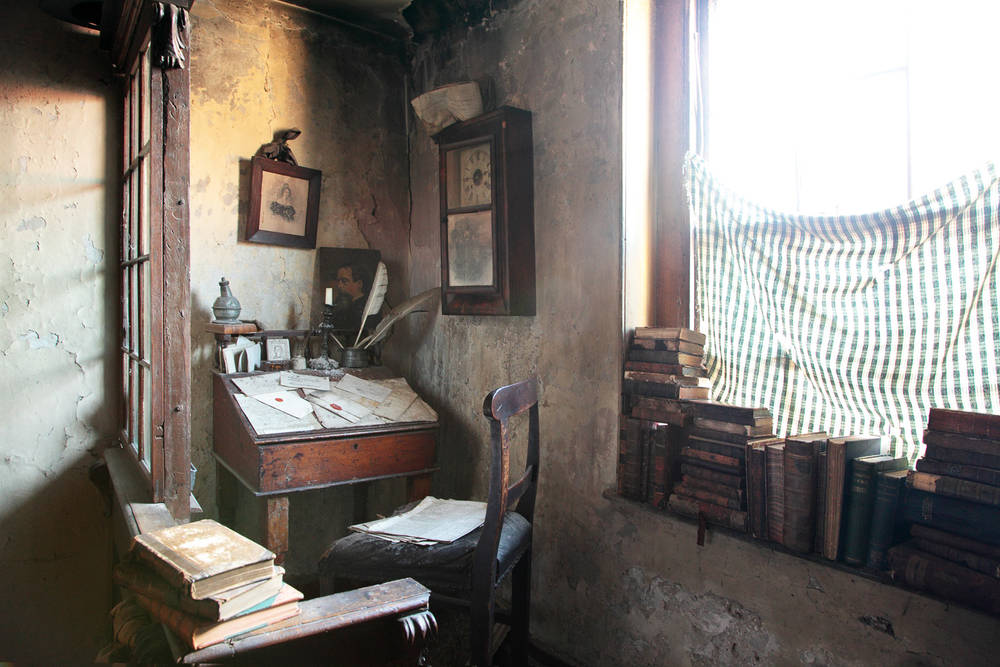
I could continue to describe the Jervis family’s home for ever and would never quite get it right. It is pleasantly warm. It smells of food. It smells of open fire, orange peel , tea and wine. It always smells a little musty-sweet. The furnishings are opulent, cozy, playful, baroque, the colors are all warm and their effect is further heightened by the candle light. Homely family chaos abounds. Objects populate all of the surfaces, bowls stand in a corner, figures, stuffed ducks, boots, a bunch of lavender hangs over the chamber pots. Generous amounts of fruit can be found in almost all rooms, a lit-up étagère with candied fruit can be found on the first floor. Touching is not allowed, and not because we are in a museum. 18 Folgate Street is not a museum. We are in the house of the Jervis family. Those who refuse to play this game for a lack of fantasy might be interested to know that during his life time this was the private home of Dennis Severs.
Into the picture
Dennis Severs was an American Brit-by-choice, an artist with a passion for past times. He bought the house in Folgate street in 1979 for 42.000 pounds, and spent the rest of his life furnishing it in the same way its original inhabitants would have done. He lived there just for the fun of it, leading small groups of visitors through his rooms and the perfectly staged life of the Jervis family for 50 pounds. It was not just the tea in the cups that was real, but the contents of the chamberpots, too. Dennis Severs used his visitor’s imagination as a canvas. Walking through the door of 18 Folgate street is like walking through a frame and into a painting, into the world and the time of the picture shown.
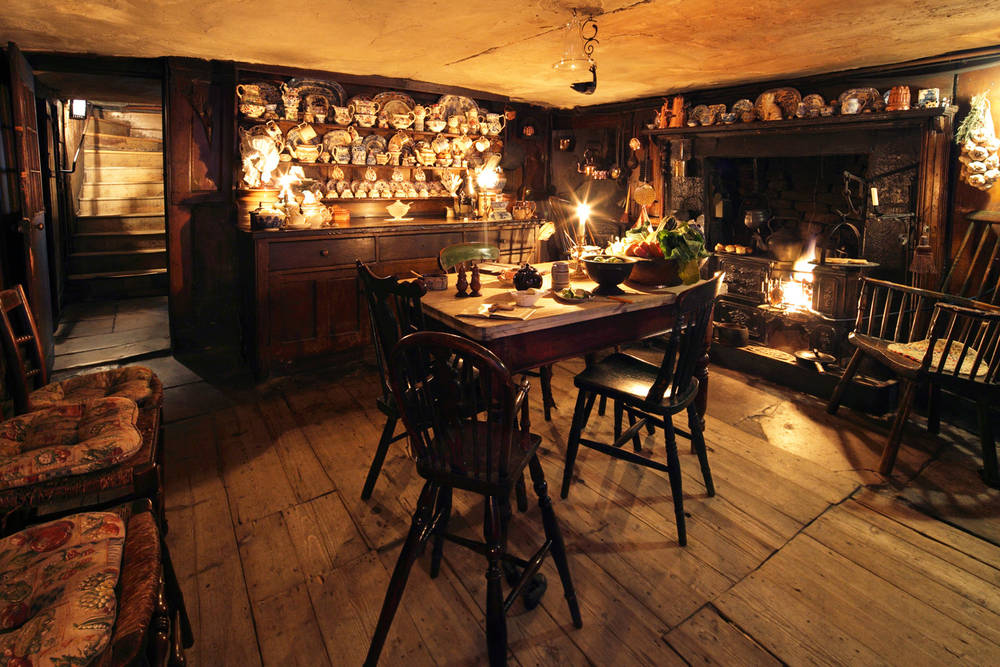
Severs called his house a “Still Life Drama,” and to this day the motto of the house is “Either you see it, or you don’t”. Those entering the house and looking at it as a diorama in a natural history museum of sorts, as a cabinet of curiosities, those who expect to learn about history in this house are in the wrong place. Severs would show visitors the door at regular intervals; if they wanted to learn something, he would say, they should read a book. And with respect to all of the objects in the house: it makes no difference whether they are 18th century originals. What this is about is delving into a different time, going on an imaginary journey of trying to put the puzzle pieces together. What happens in this house and what can we learn about its inhabitants from the everyday still lives? On this trip we experience the environment with all of our senses. We see, hear, smell and feel. What you don’t see is important, Dennis Severs once said. He died in 1999 at the early age of 51 after a battle with cancer.
Where was I?
Describing the Dennis Severs house with nothing but words is impossible. Those visiting London simply have to go and see for themselves. It is a journey through time. The clocks in the house tick but they tick in a different century. The atmosphere is that of an old master painting. The light could be by Caravaggio, the blur by Rembrandt. It’s like being in a cocoon. You forget that roaring contemporary London waits outside. As I walk back downstairs from the top floor all of the doors to the rooms are closed. Having another peek is not welcome – privacy please, none of my business.
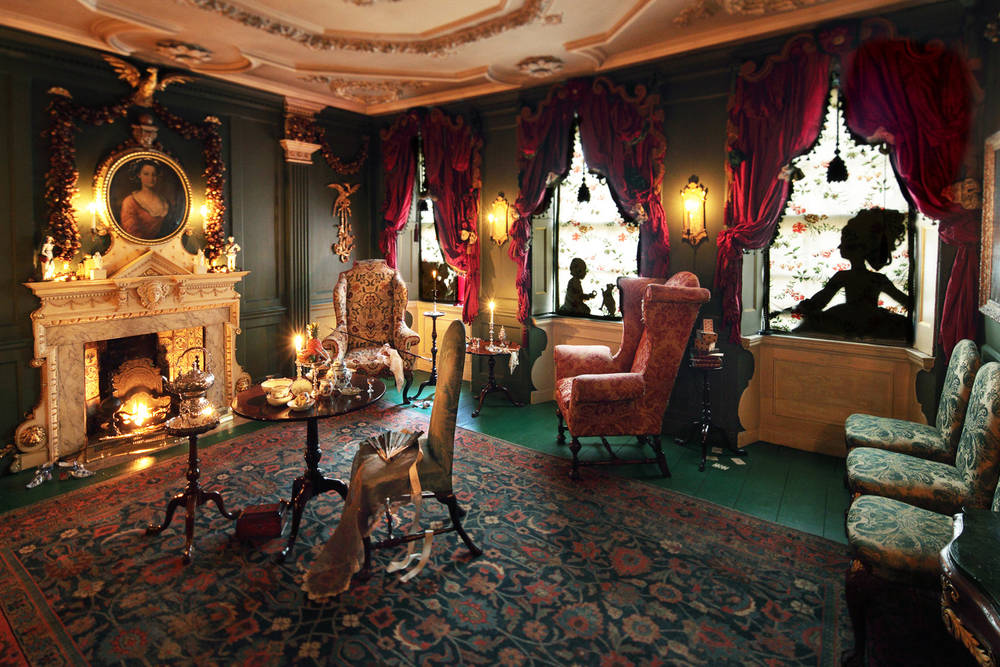
And so I walk back to the ground floor and before I know it I’m back outside, in front of the door of 18 Folgate Street. I feel hazy. Where was I just now? 40 minutes of silence, wonder, entirely submerged in the environment. I try to preserve this wonderful feeling, get on my bike and cycle through London as though under a diving bell. Through the city, its streets now calmer, past the pubs with throngs of people outside. I can’t remember which bridge I took across the Thames. Back home I have tea. By candlelight.
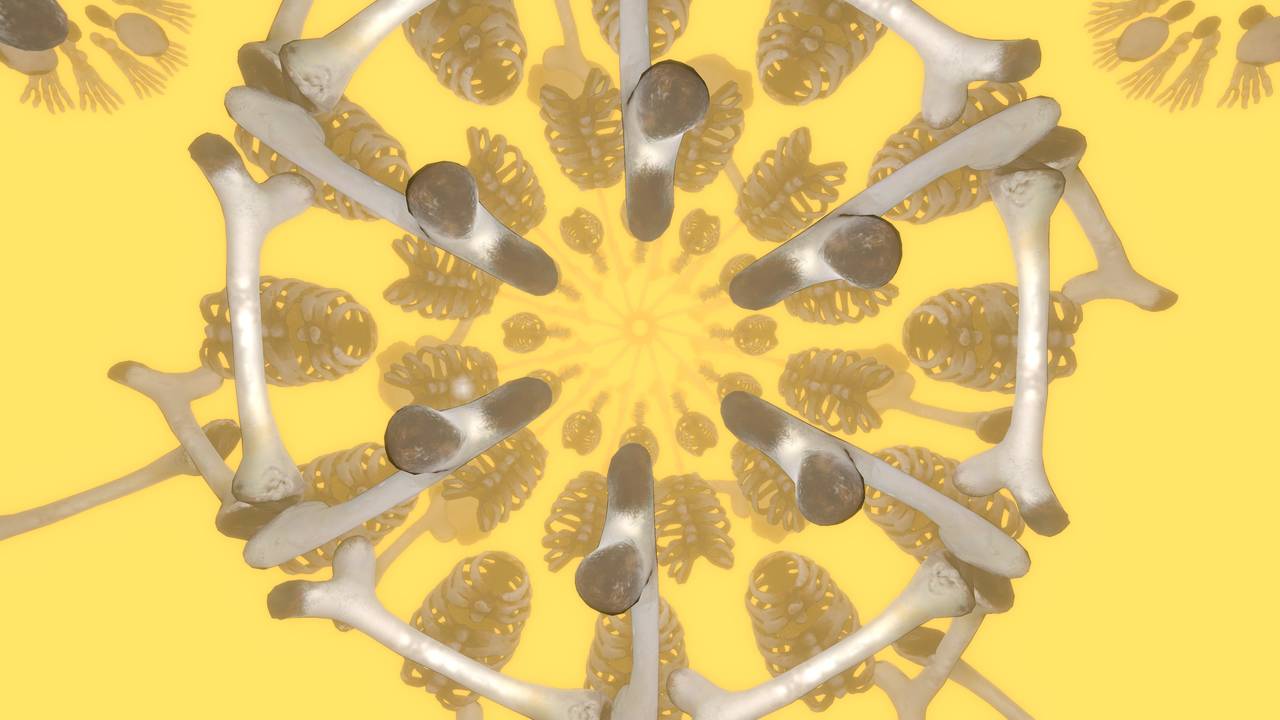
How Virtual Reality conquers the art world
Ever danced with a wolf? Artist duo Djurberg & Berg make it possible with their first virtual reality work. They are part of a young generation of...
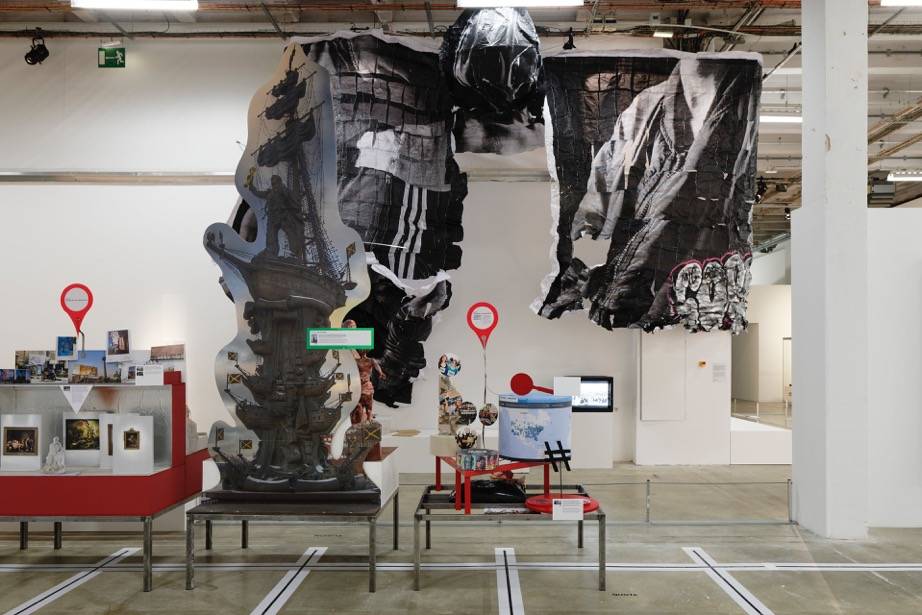
The enemy of my enemy
From August 23 onwards, a unique project by artist Neïl Beloufa will transform the SCHIRN into a stage. Palais de Tokyo is currently hosting Beloufa's...
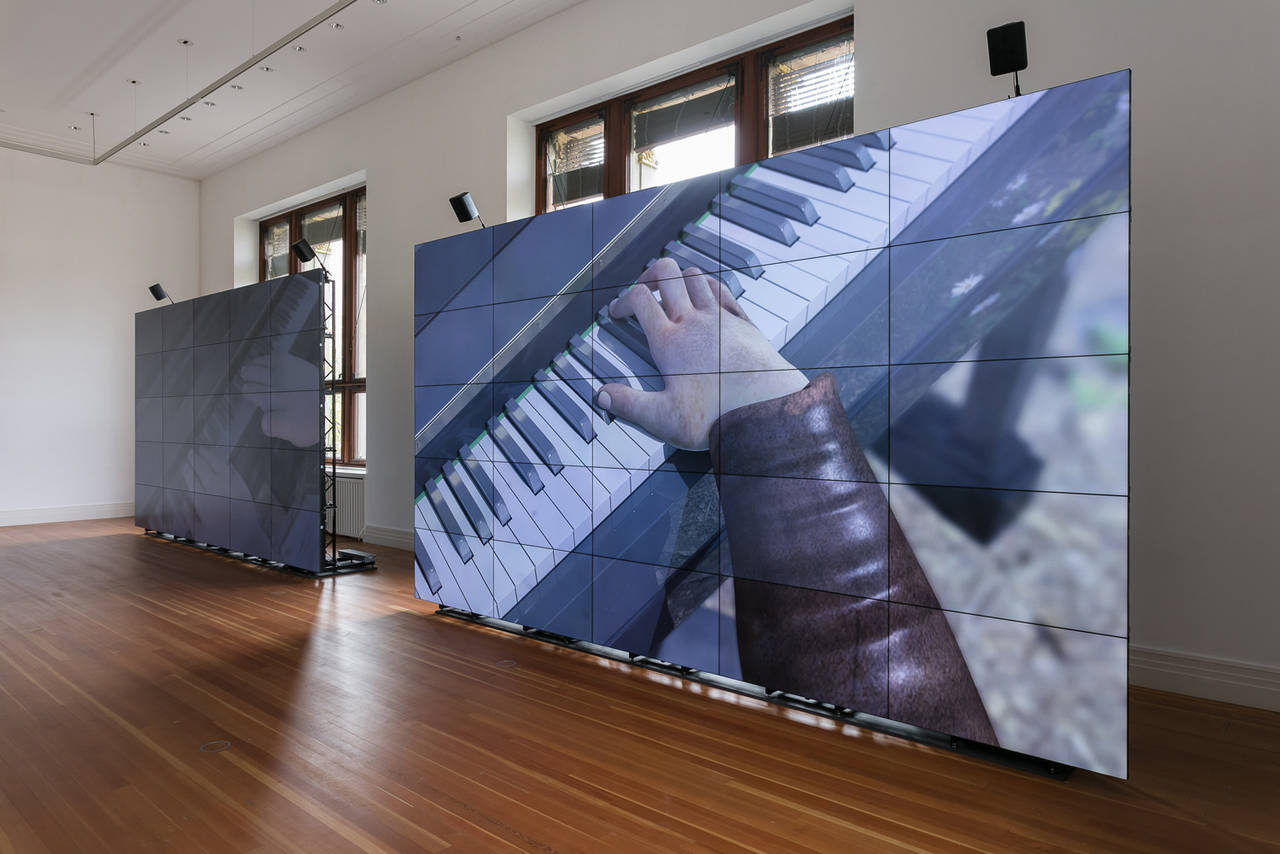
In the vicious circle of sadness
As part of the “Immersion” series, British artist Ed Atkins is presenting an exhibition at Martin-Gropius-Bau that addresses our ubiquitous escapism...
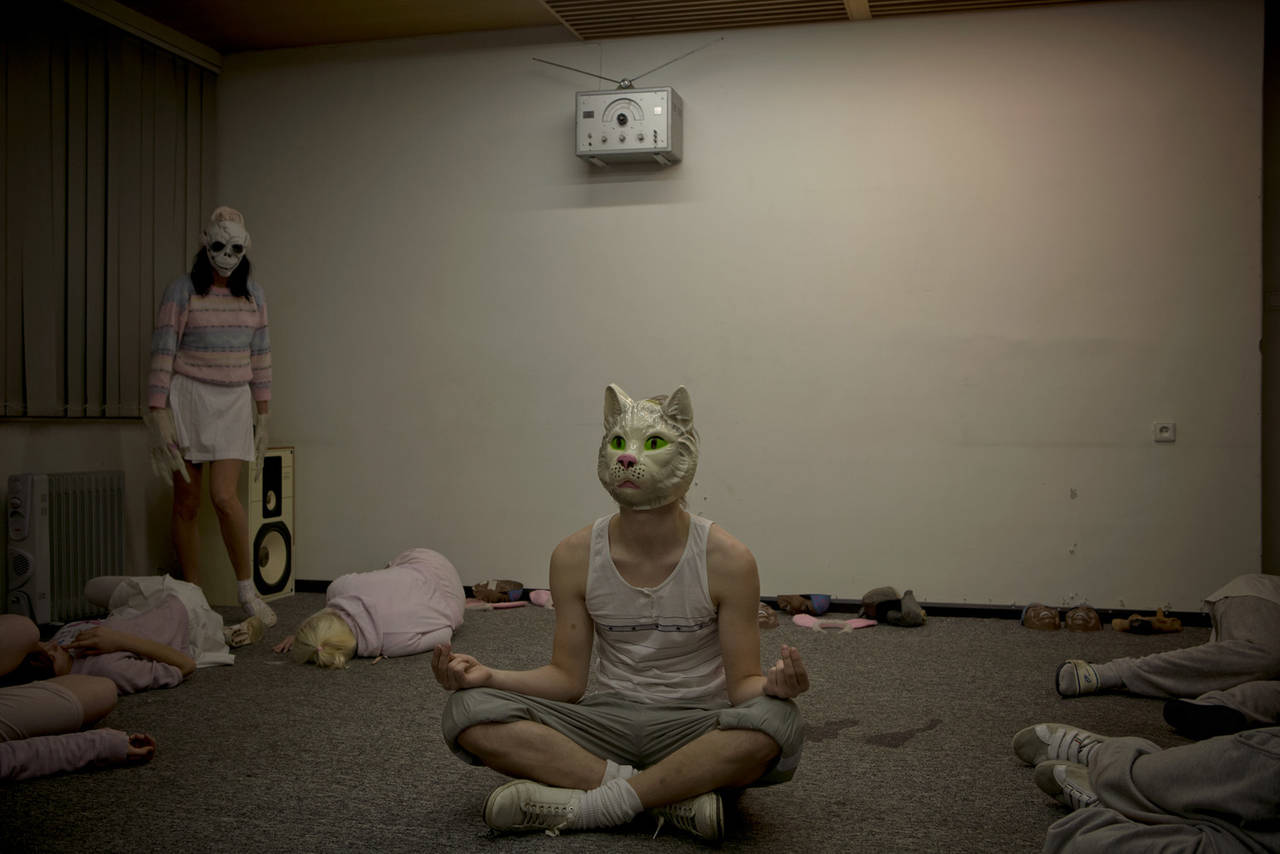
The border between reality and fiction
Its productions turn the theatergoer into an actor: An interview with performance collective SIGNA about immersion, fiction and its play “Das halbe...

From window to pool
The distance between viewers and film is becoming ever smaller. Even 120 years ago, cinemagoers were jumping out of their seats as a locomotive...

A walk-in diorama
These days, computer games are discussed in arts supplements. What is their appeal and how do they develop such a strong draw for people? Let’s play!

Hats off, it’s Wagner
The opera “Mondparsifal Beta 9-23” by Jonathan Meese at Berliner Festspiele draws visitors into a cosmos where logic plays only a subordinate role.

Complete dissolution
Is complete immersion in a virtual world a utopia or a dystopia? These and other questions are answered by Prof. Rupert-Kruse, immersion researcher,...

Noise interference from a distant world
An experience for all the senses: An exhibition at Kunstverein Frankfurt invites viewers to immerse themselves in virtual and constructed worlds
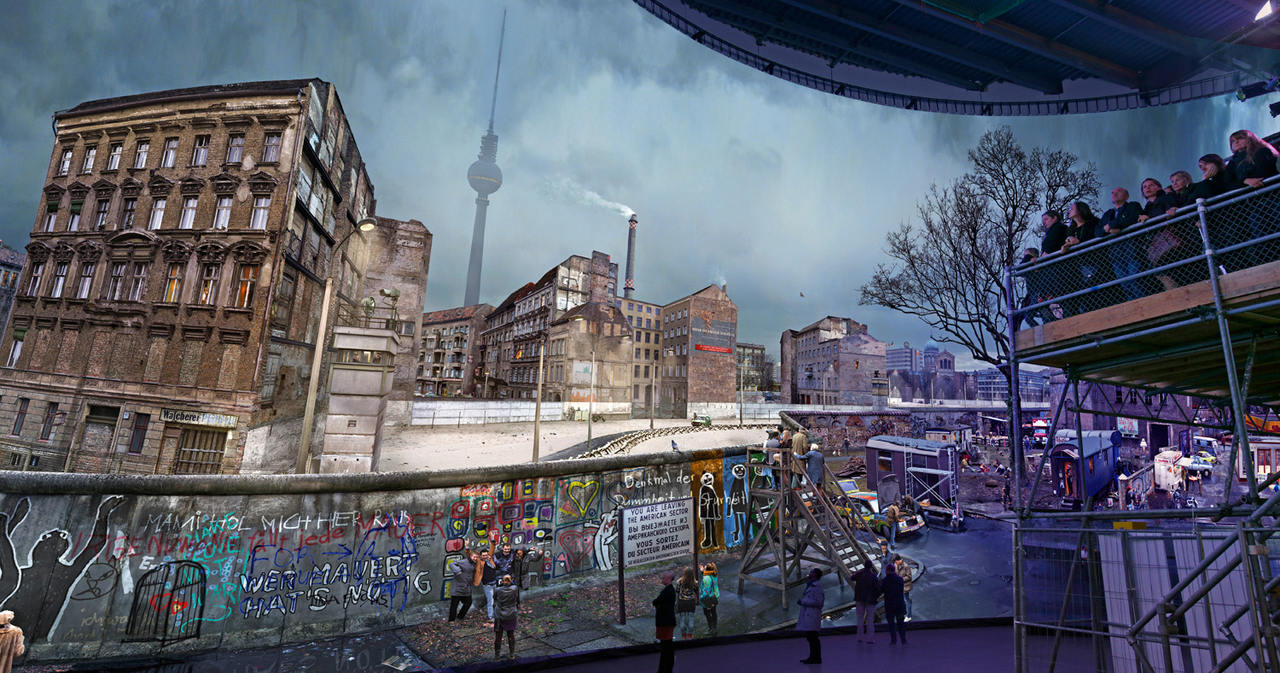
A journey back in time to a divided Berlin
It might not look very exciting from the outside: A large black rotunda that has landed on the onetime “Death Strip” of the Berlin Wall like a...

Diorama. Inventing Illusion
Reality or illusion: The SCHIRN presents a major exhibition dedicated to the idea of staged vision.
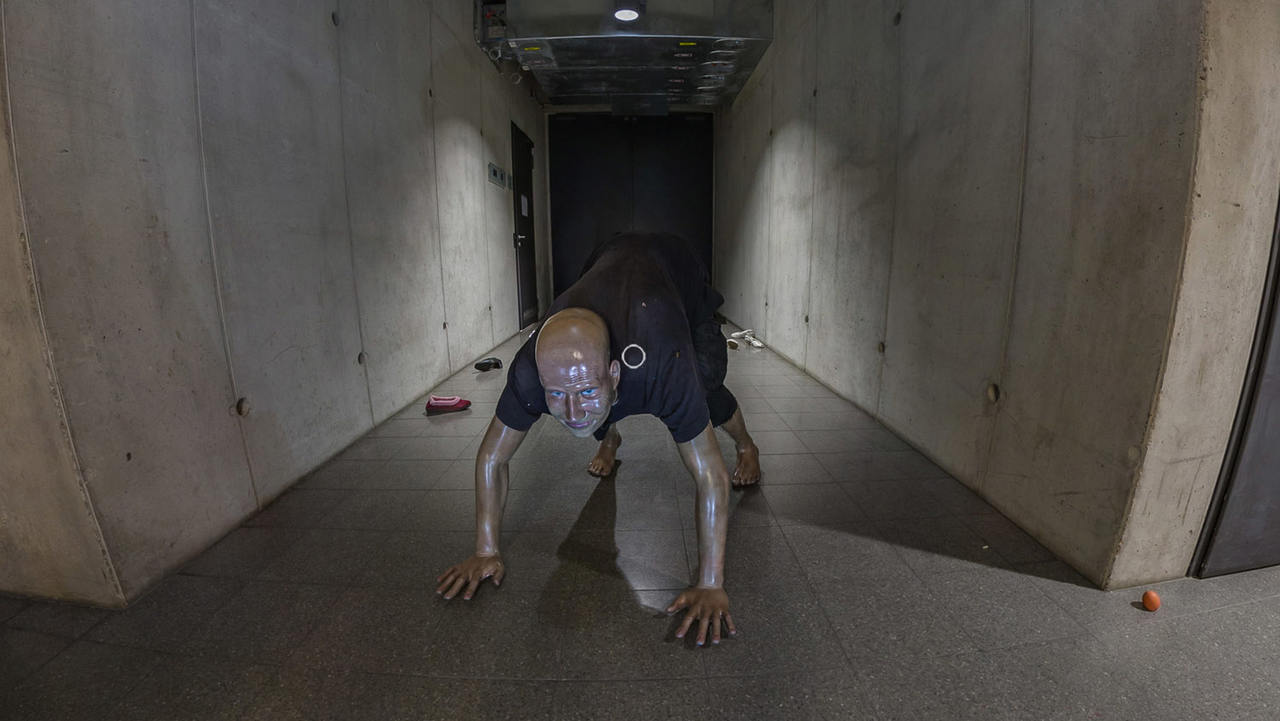
Zombies like us
The Internet is full of the undead. The artist duo New Scenario makes them visible — in works that function online, and even offline sometimes.